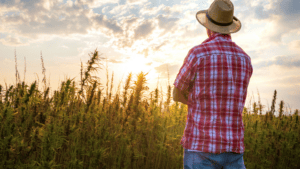
Eating Disorders, Cannabis, & Mental Health Awareness
Mental Health Awareness Month is recognized throughout the month of May. As the National Alliance on Mental Illness (NAMI) states, “It’s an opportunity for all of us to come together

Mental Health Awareness Month is recognized throughout the month of May. As the National Alliance on Mental Illness (NAMI) states, “It’s an opportunity for all of us to come together

In 2022 Colorado gathered experts across the state to convene in a task force to study intoxicating hemp products and make legislative and rule recommendations. The task force, of which

Mother’s Day is a special occasion to show appreciation for the wonderful women in our lives who have raised us and nurtured us. If your mom, or mom-figure, enjoys cannabis,

There is considerable evidence to suggest that the endocannabinoid system (ECS) is involved in the pathophysiology of depression. Endocannabinoids and CB1 receptors are widely distributed in the brain areas

Did you ever wonder if all families living with autism are pioneers? Forging a unique and sometimes challenging journey into each simple every day of life? Join Erica Daniels mother

Disclaimer: The following blog is for informational purposes only and is intended for individuals in regions where the use of cannabis is legal. It is important to know and follow

Since January, several bills have been introduced in Washington state to ban the sale of full-spectrum CBD products, both in stores and online. SB 5367 passed both chambers of the

Today, and every day, Realm of Caring is guided by our North Star, Charlotte Figi, reminding us why we fight for access for all – through education, research, and advocacy.

Almost exactly one year ago today we called on you to take action on Colorado Bill SB22-205 that threatened to strip you and I of our access to hemp products

There are currently 6.7 million Americans living with Alzheimer’s disease, a number that is expected to rise to 13 million by 2050. Alzheimer’s disease is the most common cause of
Open the following in new tabs if you:
If you are already a user: Client Login
If you are not, then register: Client Registration
Once Logged in, click below to refresh the page.